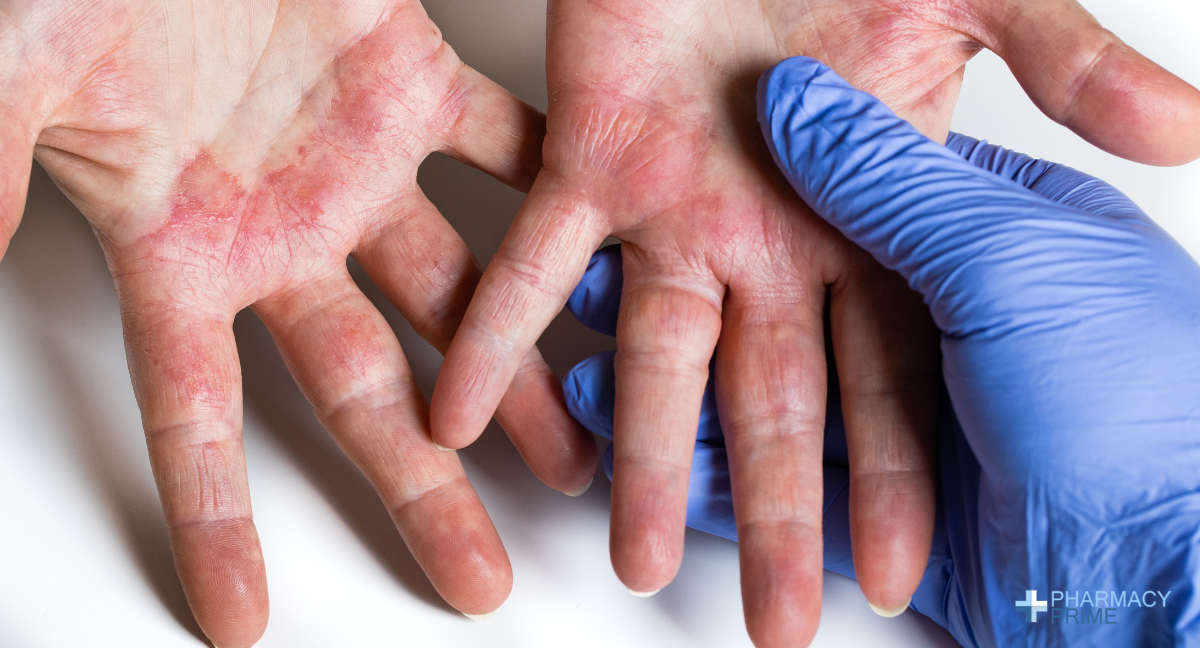Introduction
Contact dermatitis is a common issue affecting many people in the UK, and it is nothing to be ashamed of. There are different treatment options that can help clear up your skin and keep you comfortable. In this blog, we’ll take a look at what contact dermatitis is, what its symptoms are, how to quickly get rid of contact dermatitis, the best ointment or cream for it, and what might happen if you ignore it.
What is contact dermatitis?
Contact dermatitis is a type of eczema (a group of conditions which cause skin to become dry and irritated). It is triggered by your skin coming into contact with a particular substance. Contact dermatitis can either be the result of an irritant (something you are sensitive to) or an allergen (something your body is allergic to).
What are the symptoms of contact dermatitis?
Contact dermatitis usually causes your skin to become itchy, blistered, dry, and/or cracked. People with lighter skin may find that their skin becomes red, while those with darker skin may notice that their skin becomes darker brown, purple, or even grey.
Typically, you will start to experience symptoms within a few hours of having come into contact with whatever substance is the irritant or allergen. Any part of your body may be affected, but most commonly you will experience symptoms on the skin of your face and hands.
How do I get rid of contact dermatitis, fast?
Usually, contact dermatitis clears up quickly if the substance causing the issue is identified and removed from your routine. This may require some level of detective work, such as considering what products like soaps, lotions, or fragrances you are using, or other substances you may come into contact with such as the detergents used in clothes washing, and when the dermatitis arises in relation to using these products.
There are also treatments available, most often in the form of a cream or ointment, which can help to soothe your skin and improve the dermatitis as you try to identify what substance may be causing the issue.
What cream or ointment is the best for contact dermatitis?
At Pharmacy Prime, we recommend the E45 Dermatitis Cream, which is suitable for mild to moderate cases of dermatitis, including for children aged 3 months and over. It is gently applied twice a day (or as often as needed) to the affected skin and will help treat red and itchy skin.
What happens if I don’t treat contact dermatitis?
If you ignore contact dermatitis, it may become a chronic condition that causes more serious symptoms and reactions, including skin changes (such as thick, scaly, dry skin that may change in colour, sometimes permanently), infection of the affected areas, and hair loss.
It’s important to treat your contact dermatitis and identify what may be causing it, removing this allergen or irritant from your routine. If your dermatitis does not improve, or if it worsens, you should contact your GP or pharmacist.
In summary
Contact dermatitis is a common condition affecting many people. The result of coming into contact with an allergen or irritant, its symptoms include dry, itchy, blistered, and/or cracked skin. At Pharmacy Prime, we recommend the E45 Dermatitis Cream, which is suitable for mild to moderate cases of dermatitis, including for children aged 3 months and over. In addition to using a product like this, you should take steps to identify and eliminate the irritant or allergen contributing to your contact dermatitis. If left untreated, contact dermatitis can worsen and cause permanent changes to your skin.

